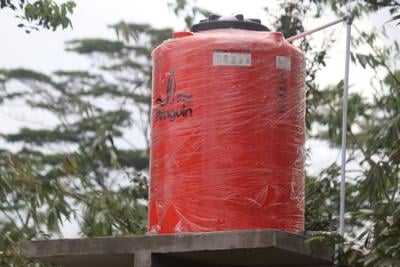
In a world facing increasing water scarcity and climate change, water conservation has become a critical issue for households and communities alike. Water tanks for home offer a simple yet effective solution to reduce water consumption, improve water quality, and enhance water security.
What are Water Tanks?
Water tanks are storage containers that collect and store water for various purposes. They come in a variety of sizes, materials, and configurations to suit different needs and preferences. Water tanks can be installed above ground or underground, and they can be used to store rainwater, municipal water, or well water.
Benefits of Water Tanks for Home
Installing a water tank at home offers a multitude of benefits, including:
Increased Water Security: Water tanks provide a reliable backup water supply during emergencies such as droughts, water main breaks, or power outages. With a steady supply of stored water, households can maintain essential daily activities and ensure their health and well-being.
Reduced Water Costs: Rainwater harvesting through water tanks can significantly reduce or even eliminate reliance on municipal water supplies, lowering water bills and minimizing the impact of rising water costs.
Improved Water Quality: Rainwater is often cleaner and softer than municipal water, as it is free from chlorine, fluoride, and other chemicals added during water treatment. Storing rainwater in a water tank helps preserve its quality and provides a healthier alternative for non-potable uses like gardening, laundry, and car washing.
Environmental Benefits: Conserving water resources and reducing reliance on municipal water treatment plants help conserve energy and minimize environmental impact. Water tanks promote sustainable water management practices and contribute to environmental protection.
Fire Protection: Water tanks can serve as a valuable source of water for firefighting purposes, especially in rural areas where access to fire hydrants may be limited.
Increased Property Value: Homes equipped with water tanks are often considered more desirable and may command higher property values due to the enhanced water security and sustainability benefits they offer.
Types of Water Tanks
The type of water tank you choose will depend on your specific needs, preferences, and available space.
Above-Ground Water Tanks: Above-ground water tanks are typically made of plastic or metal and are easy to install and maintain. They are a suitable option for homes with limited space and are often used for rainwater harvesting.
Underground Water Tanks: Underground water tanks are typically made of concrete or fiberglass and offer greater durability and storage capacity. They are well-suited for larger homes or properties with ample space.
Portable Water Tanks: Portable water tanks are ideal for temporary or emergency situations and are often used for camping, construction sites, or disaster relief efforts. They are typically made of durable and lightweight materials like polyethylene or polyurethane.
Choosing the Right Water Tank for Your Home
Several factors should be considered when selecting a water tank for your home:
Water Storage Needs: Assess your average daily water consumption and determine the appropriate storage capacity to meet your needs. Consider factors like household size, water usage patterns, and potential emergency water requirements.
Water Source: Decide whether you plan to store rainwater, municipal water, or well water. This will influence the tank's material, filtration system, and installation requirements.
Available Space: Determine the available space for your water tank, whether above ground or underground. Consider factors like tank dimensions, access clearances, and potential obstructions.
Local Regulations: Check with local authorities for any regulations or permits required for installing a water tank in your area.
Budget: Water tanks vary in price depending on size, material, and features. Set a realistic budget and compare prices from different suppliers.
Installing a Water Tank
Installing a water tank can be a DIY project for those with basic plumbing and handyman skills. However, it is recommended to consult a professional like Nu-Tank for complex installations or if you lack the necessary expertise.
Maintaining Your Water Tank
Proper maintenance is essential to ensure the longevity and effectiveness of your water tank. Regular cleaning, checking for leaks, and inspecting the tank's integrity are crucial aspects of maintenance.
Conclusion
Water tanks for homes have emerged as a vital solution to address water scarcity, conservation, and sustainability concerns. By providing a backup water supply, reducing water costs, improving water quality, and enhancing fire protection, water tanks offer a multitude of benefits for households and communities worldwide. Investing in a water tank is a wise decision that promotes water security and environmental responsibility.


(0) comments
We welcome your comments
Log In
Post a comment as Guest
Keep it Clean. Please avoid obscene, vulgar, lewd, racist or sexually-oriented language.
PLEASE TURN OFF YOUR CAPS LOCK.
Don't Threaten. Threats of harming another person will not be tolerated.
Be Truthful. Don't knowingly lie about anyone or anything.
Be Nice. No racism, sexism or any sort of -ism that is degrading to another person.
Be Proactive. Use the 'Report' link on each comment to let us know of abusive posts.
Share with Us. We'd love to hear eyewitness accounts, the history behind an article.